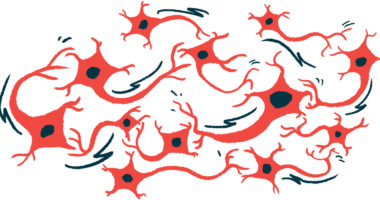Rare sequence variant mutations are cause of 6 SMA cases
The rarity of this type of mutation can result in delays in diagnosis

Six unusual cases of children with spinal muscular atrophy (SMA) caused by sequence variants, rather than the more common genetic deletion, were described in a recent report.
SMA is caused by mutations in the SMN1 gene. Everyone inherits two copies of the gene, one from each parent. SMA is a recessive disorder, meaning it will only develop if both copies of the SMN1 gene carry a disease-causing mutation.
The most common SMA-causing mutation is an exonal deletion, where a large chunk of the SMN1 gene is missing entirely. About 95% of SMA patients have a deletion in both copies of the SMN1 gene. Most of the remaining 5% have one SMN1 copy with an exonal deletion, while the second copy has a different type of mutation called a sequence variant, which means the entire gene is present, but its genetic code is incorrect.
There have been reports of people with SMA who don’t have even one exonal deletion, but instead have sequence variants in both SMN1 gene copies. Called homozygous sequence variants, it’s an extremely rare cause of SMA, already itself a rare disorder. Only a dozen such cases have been documented.
Complicating matters for these patients, first-line diagnostic genetic tests for SMA will often look for the exonal deletion, since this mutation is present in almost all cases. But looking only for the deletion in patients with homozygous sequence variants can lead to a false-negative result and delay a diagnosis.
SMA resulting from homozygous sequence variants
Here, researchers in Australia reported six new cases of SMA with homozygous sequence variants. The paper, “Rare homozygous disease-associated sequence variants in children with spinal muscular atrophy: A phenotypic description and review of the literature,” was published in Neuromuscular Disorders.
The six patients were from three families — three sisters in one family, two brothers in another, and an only child in the third. In two cases, the children were born to consanguineous marriages, meaning their parents were related. In the third case, the parents came from the same small village.
In all three families, initial diagnostic tests that looked for the exonal deletion returned inconspicuous results, but subsequent sequencing of the SMN1 gene revealed the homozygous sequence variants. Since treatments for SMA can slow disease progression, but generally can’t reverse damage that’s already happened, delays in diagnosis are a major problem, the researchers noted.
“In the era of disease-modifying therapies for SMA and better outcomes with earlier treatment, it is imperative the diagnosis of SMA is not delayed,” they wrote, adding the SMN1 gene should be sequenced if SMA is suspected, but tests for a deletion are normal.
The six patients showed a range of symptom severities. Even among the three sisters, all of whom had the exact same pair of SMA-causing mutations, there was substantial variation. Two sisters began showing symptoms in early childhood, but the third didn’t have any notable issues until age 12.
Four patients received treatment with Spinraza (nusinersen). One, who had relatively mild symptoms when treatment started, saw substantial improvements in motor function with Spinraza. Motor function has been generally stable with Spinraza for the other three, showing patients with this rare mutation type can respond well, said the researchers.








